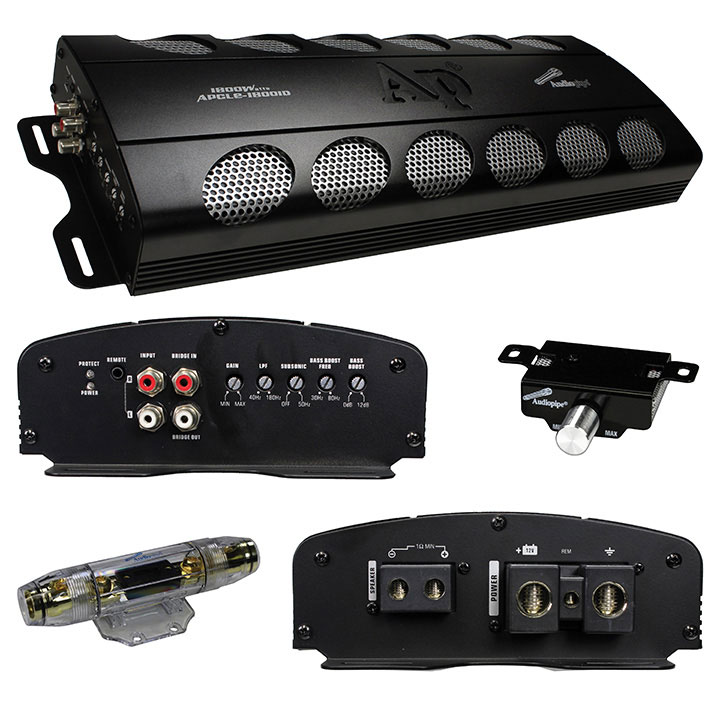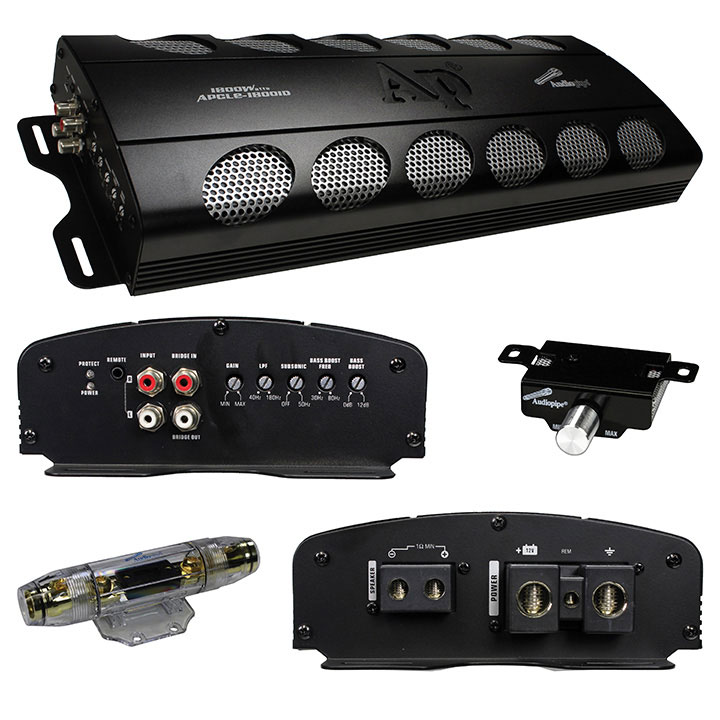Answer
Aug 21, 2024 - 04:06 PM
The main difference between Class AB and Class D amplifiers in car audio systems lies in their design, efficiency, and the type of sound they produce. Here's a detailed comparison:
1. Amplification Technology-
Class AB Amplifiers:
- Operation: Class AB amplifiers use a combination of Class A and Class B technologies. They operate by having the output transistors partially on at all times, which allows for smoother transitions between the positive and negative halves of the audio waveform. This results in lower distortion compared to Class B amplifiers.
- Efficiency: Class AB amps are more efficient than Class A amplifiers but less efficient than Class D amplifiers. They typically have an efficiency of around 50-70%, meaning that a significant amount of power is dissipated as heat.
- Sound Quality: Class AB amplifiers are known for their good sound quality, particularly in terms of clarity and detail. They are often favored for full-range audio applications where high fidelity across all frequencies is important.
-
Class D Amplifiers:
- Operation: Class D amplifiers use a different approach called pulse-width modulation (PWM) or switching. They rapidly switch the output transistors fully on and off, creating a series of high-frequency pulses that represent the audio signal. These pulses are then filtered to produce the final audio output.
- Efficiency: Class D amplifiers are much more efficient than Class AB amplifiers, with efficiencies often exceeding 90%. This is because the output transistors are either fully on or fully off, minimizing the power lost as heat.
- Sound Quality: While Class D amplifiers are highly efficient, they historically had a reputation for slightly lower sound quality compared to Class AB, particularly in the midrange and treble frequencies. However, modern Class D amplifiers have improved significantly and can now offer excellent sound quality, especially in bass-heavy applications.
-
Class AB Amplifiers:
- Heat Generation: Due to their lower efficiency, Class AB amplifiers generate more heat. This requires them to have larger heatsinks or cooling systems to prevent overheating.
- Power Output: Class AB amplifiers are capable of delivering high-quality sound at moderate power levels, making them suitable for full-range speakers and subwoofers.
-
Class D Amplifiers:
- Heat Generation: Class D amplifiers generate much less heat due to their higher efficiency. This allows them to be more compact and lighter, with smaller heatsinks or cooling requirements.
- Power Output: Class D amplifiers are particularly well-suited for high-power applications, such as driving subwoofers, where efficiency and power output are crucial.
-
Class AB Amplifiers:
- Best For: Class AB amplifiers are often used in applications where sound quality is the top priority, such as in high-end car audio systems, driving full-range speakers, or component systems.
- Sound Signature: These amplifiers are known for their warm and detailed sound, making them a popular choice for audiophiles who value clarity and accuracy across the entire frequency spectrum.
-
Class D Amplifiers:
- Best For: Class D amplifiers are commonly used in applications where high power and efficiency are needed, such as powering subwoofers in car audio systems. They are also favored in setups where space and heat management are concerns.
- Sound Signature: Class D amplifiers excel in delivering powerful bass, making them ideal for subwoofer applications. Modern Class D amps can also handle full-range audio, but they are still primarily chosen for their efficiency and compact size.
-
Class AB Amplifiers:
- Cost: Class AB amplifiers tend to be more expensive than Class D amplifiers due to their more complex circuitry and higher-quality components needed to achieve lower distortion and better sound quality.
- Complexity: The design of Class AB amplifiers is more complex, requiring careful attention to heat dissipation and power management.
-
Class D Amplifiers:
- Cost: Class D amplifiers are generally more cost-effective, especially in high-power applications. Their simpler and more efficient design allows for lower production costs.
- Complexity: Class D amplifiers are less complex in terms of heat management but require sophisticated filtering and processing to achieve good sound quality.
-
Class AB Amplifiers: Offer better sound quality, especially in the midrange and high frequencies, with lower distortion. They are less efficient, generating more heat, and are typically used in full-range audio applications where sound fidelity is critical.
-
Class D Amplifiers: Are much more efficient, generate less heat, and are more compact, making them ideal for high-power applications like subwoofers. While they historically had a reputation for lower sound quality, modern Class D amplifiers have closed the gap, especially in bass-heavy and high-power setups.
Choosing between Class AB and Class D amplifiers depends on your specific needs, such as the type of speakers you are driving, the desired sound quality, and the importance of power efficiency in your setup.





Add New Comment